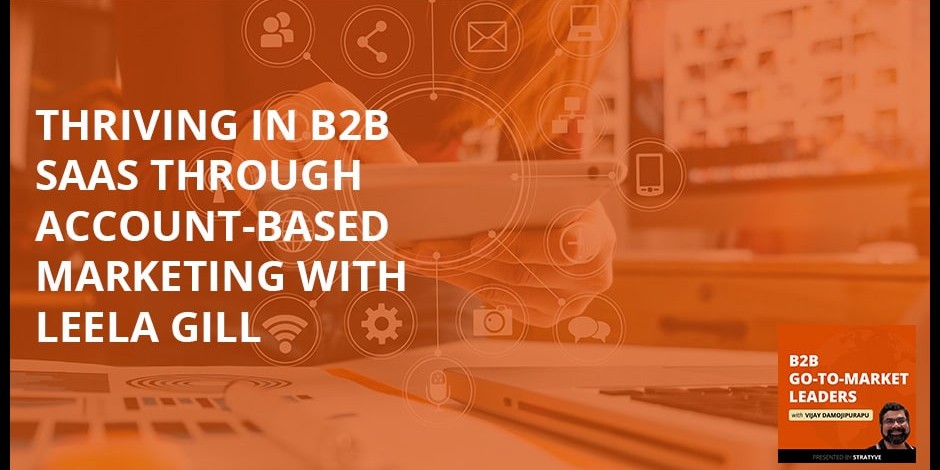How to Write a Business Plan
2 MIN READ
Why write a business plan?
Writing a business plan makes you think about your whole business and encourages dialog amongst your colleagues as to your best strategy for growth. Yes, investors want to read the business plan because it indicates you have thought through your strategies but really a business plan is your tool to help you effectively manage your company growth.
Today, business plans are getting shorter and some might even argue they can raise funds without a business plan, a PowerPoint might just do it. We believe that business plans are an important tool for the entrepreneur and should be done. They don’t have to be seventy pages, but they do need to cover the basic business elements and include a thoughtful section on growth.
The Business Plan Outline
Business plans vary depending on type of business and personal style but in general, we recommend the following outline. Your sections should include an executive summary, company description, market overview and competition, leadership team, go-to-market approach, financials, use of proceeds, risks, and appendices.
The most important section of your business plan is the executive summary because it will be read frequently. Focus on the details. Make the content compelling, the grammar correct, and the formatting colorful.
The executive summary should include a company overview, investment highlights (why invest in this company?), and a short discussion about the market opportunity, technology and products, and business model (how are you going to make money?). It should discuss the competitive landscape and highlight your customer value proposition. Include a brief management description (talk about accomplishments, not where you last worked) and a high-level summary of the financials. We recommend this section be between two to five pages in length depending on your audience.
The next most important sections are the go-to-market (GTM) strategy and the financials. The GTM strategy is important because it is your fundamental approach to how you are going to penetrate your market. What customers are your targeting and why? What specific sales and marketing programs will you implement? How will you extend your product line over time? These are just a few questions you should answer in this section. Your GTM strategy will evolve as you learn more about your customers so keep it updated.
Along with the typical profit & loss and balance sheet statements, a cash flow statement should be included in the financial section. The cash flow statement is important because it lets your prospective investors know when you need cash! Document your assumptions and include headcount numbers and relevant business ratios. You will need to track and validate your assumptions as you grow your business.
As a quick summary, here are the sections that must be included in your business plan.
Executive Summary
Our style is to include a company description, investment highlights, business model, market size and overview, technology and products, business model, competition, management team and financials. The trick is writing this section concisely with compelling information.
Company Description
The Company description section should describe the company products, target customers, and the value proposition. Discuss intellectual property protection and the status of product development. Explain product pricing, promotion plans, distribution channels, and sales cycle times.
Market Overview and Competition
This section should describe the overall market (size, growth rate, trends), customer segments and competition. Include relevant data and quote your sources. Discuss customer buying habits, market sales cycle and channel structure. Include a discussion about the major competitors and their current growth strategies. At the end of this section, we encourage you to discuss your company value proposition and why you will succeed in the market. It’s a great way to remind investors of your capability to win in the market.
Leadership Team & Organization
Discuss the legal business structure, board memberships, and capitalization table. Document key leadership bios and headcount requirements as the business expands.
Go-To-Market Strategy
Describe your growth action plan per year for the next three to five years and include major milestones.
Financials
This section is the narrative of your historical and planned financial performance. A summary table of your important financial metrics should be included. Place the detail data in the appendices.
Capital Requirements & Use of Proceeds
Quantify the amount of money you are looking for, how you will spend it and the milestones accomplished after the funds are used.
Risks & Disclosures
Discuss technical, market and business risks and actions you are taking to minimize those risks.
Appendices
Include product data sheets, relevant test reports, price data, product roadmaps, case studies, literature, recent press, etc.
Conclusion
If you cover these sections, you have the basics to a great business plan. If you need help with your strategic planning process, give us a call. We would be delighted to help you get started and see your business grow!
Related Posts:
Thriving In B2B SaaS Through Account-Based Marketing With Leela Gill
The COVID-19 pandemic is the biggest business challenge of a generation. Organizations scramble to establish…
6 Priorities for Marketing Leaders to Help Drive Business Recovery
The COVID-19 pandemic is the biggest business challenge of a generation. Organizations scramble to establish…
Four Remote Work Best Practices To Build A High-Performance Culture
The COVID-19 pandemic is the biggest business challenge of a generation. Organizations scramble to establish…
Three Marketing Pillars For Crisis Recovery
The COVID-19 pandemic is the biggest business challenge of a generation. Organizations scramble to establish…
Google Killed The Cookie: An Opportunity For Marketers
The COVID-19 pandemic is the biggest business challenge of a generation. Organizations scramble to establish…
39 Sales Email Subject Lines That Get Opened, Read, and Responded To
Want better email open rates? This helpful blog post by Emma Brudner of HubSpot has great ideas for email…
A 10-Step Brand Development Strategy
A strong, well-differentiated brand will make growing your firm much easier. But what type of firm do you…
Your Marketers Are Your Change Management Leaders
As business leaders adapt to the Fourth Industrial Revolution (Industry 4.0), which marries physical assets…
3 Tips for Pitching Your Company to VC’s
Every entrepreneur needs money to create his/her business but deciding when to get institutional money…
5 Common Mistakes Made by Experienced Salespeople
2 MIN READ
Jeff Hoffman @mjhoffman from HubSpot Sales recently wrote a short but spot-on article on the 5 common mistakes made by sales people. In his blog, he outlines that even the best salespeople may disqualify prospects before they really exploring the company’s needs, because the person does not fit the persona profile.
In today’s gig economy, 70% of buyers do their own research before making any evaluation decisions. And what we have found is that many prospects will let you know if they are interested or not in your products – you just need to ask them. People don’t want to waste your time or theirs, so it does not hurt to ask potential prospects direct questions – “are you interested in learning about these capabilities? If so, when would be the right time for me to follow up?” We have found people will be honest and when the timing is right, they engage.
Jeff also writes that sales teams can depend too much on their existing internal champions – and I can’t agree more! Make sure you find other people within the organization to test out your theories about corporate needs. There is so much turnover in today’s modern corporation that your champion may be thinking about his or her career instead of the next big productivity improvement.
So, just because your champion does not have time to learn about your new offering does not mean their colleagues are not interested. Search for as many contacts into your Ideal Corporate Profile to verify what you learn from one person or champion.
Here are the other three mistakes Jeff outlines in his blog post. I encourage you to read the full blog – it’s a short read filled with gold nuggets of wisdom!
- They stop learning.
- They haven’t networked within their company.
- They ignore the importance of small deals.
Related Posts:
Thriving In B2B SaaS Through Account-Based Marketing With Leela Gill
The COVID-19 pandemic is the biggest business challenge of a generation. Organizations scramble to establish…
6 Priorities for Marketing Leaders to Help Drive Business Recovery
The COVID-19 pandemic is the biggest business challenge of a generation. Organizations scramble to establish…
Four Remote Work Best Practices To Build A High-Performance Culture
The COVID-19 pandemic is the biggest business challenge of a generation. Organizations scramble to establish…
Three Marketing Pillars For Crisis Recovery
The COVID-19 pandemic is the biggest business challenge of a generation. Organizations scramble to establish…
Google Killed The Cookie: An Opportunity For Marketers
The COVID-19 pandemic is the biggest business challenge of a generation. Organizations scramble to establish…
39 Sales Email Subject Lines That Get Opened, Read, and Responded To
Want better email open rates? This helpful blog post by Emma Brudner of HubSpot has great ideas for email…
A 10-Step Brand Development Strategy
A strong, well-differentiated brand will make growing your firm much easier. But what type of firm do you…
Your Marketers Are Your Change Management Leaders
As business leaders adapt to the Fourth Industrial Revolution (Industry 4.0), which marries physical assets…
3 Tips for Pitching Your Company to VC’s
Every entrepreneur needs money to create his/her business but deciding when to get institutional money…
Change Management: Can there be too much?
By Leela Gill
3 MIN READ
Change Management – Can there be “too much” transformation?
Change requires us to get out of our comfort zone and be different. But if you are constantly out of your comfort zone, is that a problem? Can there be “too much” change?
I was recently asked this question during a CX Conference and the underlying concern was that, as a leader, if you are constantly changing the environment, are you creating an environment of instability? Well, the answer is “it depends”. But first, let’s step back and talk about change.
When it comes to self-improvement, change can be exciting and empowering, as Jim Hemerling, states, because the change comes from within you. In setting your personal goals – perhaps to win a race or lose weight – you get excited about that change because you understand the benefits as it relates to you. You feel like you have control over the situation, you feel safe.
But when the change comes from your boss, all of a sudden, it can become scary. Why?
Historically organizations have used the word “transformation” to be a surrogate for “layoffs” and people fear losing their jobs. Leaders need to address that concern and alleviate it because, in the era of process automation and robotic programming, change management is here to stay.
Futurist, Bill Jensen, states that how we work will change more in the next 20 years than in the past 2,000 years, but that should not scare us; it should energize us. Leaders need to create a paradigm shift where employees are expecting constant change in the form of process improvement and personal development. But this can only work if employees do not feel threatened by change. They need to be rewarded for new thinking and adaptability.
| Leaders need to create a paradigm shift where employees are expecting constant change in the form of process improvement and personal development. |
During a recent webinar I hosted, participants were asked “within your company, what is the biggest barrier to successful change management?” the overwhelming response was “After the meeting ends, the debate begins”. In other words, politics, fear, and lack of information are major barriers to real sustainable change. These are common hurdles every leader needs to address in order to get employees excited about process improvement. Project teams are met by passive resistance because the long-term vision and corporate goals are not clearly communicated. If employees don’t understand how they fit into the bigger picture and how they will grow within the company, office politics and a culture of “no” will halt your progress.
To overcome this barrier, leaders must present an inspiring vision and align employees around compelling goals. Without clear alignment and transparency, employees will not understand the benefits and motivations behind the change.
With all of this in mind, if done properly, the answer to the question “can there be too much change?” is no.
Continuous improvement is very healthy. The vision to become more efficient, maintain a competitive advantage, and make processes easier for employees and customers should be inspiring to your teams.
To achieve more with fewer resources should be a meaningful, productive and positive goal for your organization. By using effective communication techniques, setting a realistic time frame, and ensuring your employees will benefit too, your organization can remove the human barriers to change management and set the stage for an environment of constant continuous improvement.
Related Posts:
Thriving In B2B SaaS Through Account-Based Marketing With Leela Gill
The COVID-19 pandemic is the biggest business challenge of a generation. Organizations scramble to establish…
6 Priorities for Marketing Leaders to Help Drive Business Recovery
The COVID-19 pandemic is the biggest business challenge of a generation. Organizations scramble to establish…
Four Remote Work Best Practices To Build A High-Performance Culture
The COVID-19 pandemic is the biggest business challenge of a generation. Organizations scramble to establish…
Three Marketing Pillars For Crisis Recovery
The COVID-19 pandemic is the biggest business challenge of a generation. Organizations scramble to establish…
Google Killed The Cookie: An Opportunity For Marketers
The COVID-19 pandemic is the biggest business challenge of a generation. Organizations scramble to establish…
39 Sales Email Subject Lines That Get Opened, Read, and Responded To
Want better email open rates? This helpful blog post by Emma Brudner of HubSpot has great ideas for email…
A 10-Step Brand Development Strategy
A strong, well-differentiated brand will make growing your firm much easier. But what type of firm do you…
Your Marketers Are Your Change Management Leaders
As business leaders adapt to the Fourth Industrial Revolution (Industry 4.0), which marries physical assets…
3 Tips for Pitching Your Company to VC’s
Every entrepreneur needs money to create his/her business but deciding when to get institutional money…
The Guide to Creating A Killer Ideal Customer Profile
By Marcus Svensson, Head of Growth, Albacross
5 MIN READ
The Guide to Creating A Killer Ideal Customer Profile
A good ICP (ideal customer profile) can mean the difference between an account-based marketing campaign that generates tons of new customers and one that flops.
That might sound like a strong statement. But if there’s one thing we’ve learned at Albacross after working with thousands of clients to develop their ABM campaigns, it’s that a well-researched ICP is crucial.
It’s also one of the things we find most frustrating. There’s no great complexity to putting together a great ICP. But it’s often done half-heartedly or (in some cases) not at all. You would be amazed at the number of companies that choose to be guided by gut instinct instead of taking their cues from a clear profile driven by data.
In this article, we’re going to show you exactly how to put together a ICP that lands you high-potential leads that turn into high-value accounts.
Putting your ICP in context
Where does your ICP fit into the broader ABM picture?
We like to think of any ABM campaign as having three essential stages. Other factors, like your tech stack and sales process, are also important. But ultimately it comes down to the following:
- Assemble your ideal customer profile.
- Identify and filter accounts.
- Advertise to chosen accounts.
Your ICP is the foundation on which the whole process is built. Get it right and you’re prepped for success. Get it wrong, however, and everything else is in jeopardy.
What’s the purpose of your ICP?
Once you have a solid idea of who you want to target, you can adopt one of two approaches. In our experience at Albacross, companies tend to find a middle-ground that incorporates both.
You can either collect raw lists of accounts from sources that are likely to fit with your ICP (competitors, referrals, website traffic etc.) and filter them according to your criteria.
The alternative is to use in-house expertise (from sales and marketing) and online tools which match your criteria with companies with strong potential.
Both are good strategies. But sales and marketing alignment is crucial at this stage. Collaborative market insight will mean that expertise about potentially lucrative accounts is fully leveraged. Bear this in mind once you begin to look for accounts to match these
How to Create Your Ideal Customer Profile (ICP)
Putting together your ICP is simply a matter of asking the right questions. It’s about compiling a set of criteria that potential target companies must meet in order to considered viable leads.
It’s vital to remember, however, that your ICP is not a buyer persona. It is important to map and understand the shared characteristics of individuals you will be directly contacting, but this comes at a later stage.
1. Examine your current accounts
Your current accounts make up one of the most valuable sources of data about companies which are an ideal fit for your products or services. At this stage, you’re essentially looking to define parameters that describe your “best fit” customers. This information will feed into the kind of firmographic data you evaluate future prospects by.
The first step is to rank your current accounts by their value. Budget will be a key factor, but other metrics like the resources they require, ease of onboarding and even potential to generate referrals, will all come into play.
In particular, you will should define the following:
- Industry type
- Average budget
- Average size
- Most pressing pain points
You might ask, “What if I’m starting from scratch?”
If that’s the case, you should develop a sense of which types of accounts provide most value by drawing on competitor research and your own intuitions about the market. As you begin to acquire new accounts, you can funnel your experience into a more accurate ICP.
2. Define firmographic data
The term firmographics simply refers to data about companies (demographics is data about people). Your ICP will be composed largely of this kind of data, based on market research and information gleaned from your existing accounts.
Generally speaking, firmographic data will fall into one of two camps: required and desirable.
Required data-points are those that are absolutely necessary for you to consider pursuing a target account. They will indicate a base level of profitability for you. Desirable data-points can then be used to rank the best leads and allocate resources accordingly.
The following are the main firmographic factors:
- Industry – Which industry is your solution applicable to? The level of specificness of this criteria will be determined in part by the depth of the market and your unique positioning.
- Budget/Revenue – Revenue is useful insofar as it is an indicator of budget.
- Location – Location is an obvious factor for companies with a clear catchment area. For online organizations, language and country-wide awareness will be more important.
- Employees – Information about employee size can be important for a number of reasons, especially if your working on a per-user payment model or your product is designed for a particular size of company (SMB vs. enterprise).
There is no need to overcomplicate your firmographic profile. There will be variance across industries but extraneous information is rarely likely to be helpful. At Albacross, we find that most of our customers rely exclusively on filters that determine industry, location and revenue (as an indicator of budget).
3. Technographic data
The need for technographic data will vary by industry. If your product requires a particular technological infrastructure, or (as is often the case) is incompatible with certain integrations and apps, then it is important to realize this at an early stage.
There are two questions to ask. First, does your software solution integrate with existing apps? Second, is your team familiar with the tech stack that your target companies use? Both will be important for marketing and sales.
Technographic data can also offer insights into company culture and preferences. Much can be inferred from a company’s tech habits. This kind of data can also be used to develop your sales pitch, in which you can offer seamless integration as well as informed customer service and onboarding.
Build Your ICP description
Your ICP boils down to your description. This is where you put all of the data gathered above into a clear, concise statement that best describes your ideal customer.
For Albacross, it might look something like this: Medium to large online business (number of employees greater than 10) with an account-based marketing budget of over $100,000. English or Swedish-speaking.
Your ICP description should be detailed enough to include prospects at both ends of the spectrum, from low-value all the way up to premium accounts. You can then rank accounts based on the desirable data-points defined in step two.
4. Buyer persona
Your buyer persona provides a picture of the key decision-makers that will be involved in the sales process. It is not a specific description of individuals within a particular company. Rather, it is template of shared commonalities that are likely to be encountered once discussions start.
Each target account will require personalized, in-depth research. The purpose of a buyer persona is to inform and streamline this process.
In particular, you should consider the following pieces of information:
- Job titles of key contacts – These are the people who you will begin any sales conversations with.
- Key decision makers – The individuals responsible for making the final purchase decision.
- KPIs – Which KPIs are shared by companies in a particular industry or sector?
- Common complaints – What are the common complaints cited by key contacts and decision makers? Both in terms of their current solution (or lack thereof) and the relationship they have with its providers.
Conclusion
Once you have a clear ICP, you can move onto the subsequent stages of your account-based marketing campaign with clarity. You will understand precisely who you need to target and how to do it.
The wealth of data that you have gathered will enable you to do two things. First, you can pinpoint best-fit accounts to reach out to. Second, you will be armed with a variety of insights to draw upon in the sales process.
Your ICP has far-reaching ramifications for every part of your ABM strategy. Get it right now and it won’t be long until you start reaping the consequences.
Related Posts:
Thriving In B2B SaaS Through Account-Based Marketing With Leela Gill
The COVID-19 pandemic is the biggest business challenge of a generation. Organizations scramble to establish…
6 Priorities for Marketing Leaders to Help Drive Business Recovery
The COVID-19 pandemic is the biggest business challenge of a generation. Organizations scramble to establish…
Four Remote Work Best Practices To Build A High-Performance Culture
The COVID-19 pandemic is the biggest business challenge of a generation. Organizations scramble to establish…
Three Marketing Pillars For Crisis Recovery
The COVID-19 pandemic is the biggest business challenge of a generation. Organizations scramble to establish…
Google Killed The Cookie: An Opportunity For Marketers
The COVID-19 pandemic is the biggest business challenge of a generation. Organizations scramble to establish…
39 Sales Email Subject Lines That Get Opened, Read, and Responded To
Want better email open rates? This helpful blog post by Emma Brudner of HubSpot has great ideas for email…
A 10-Step Brand Development Strategy
A strong, well-differentiated brand will make growing your firm much easier. But what type of firm do you…
Your Marketers Are Your Change Management Leaders
As business leaders adapt to the Fourth Industrial Revolution (Industry 4.0), which marries physical assets…
3 Tips for Pitching Your Company to VC’s
Every entrepreneur needs money to create his/her business but deciding when to get institutional money…













